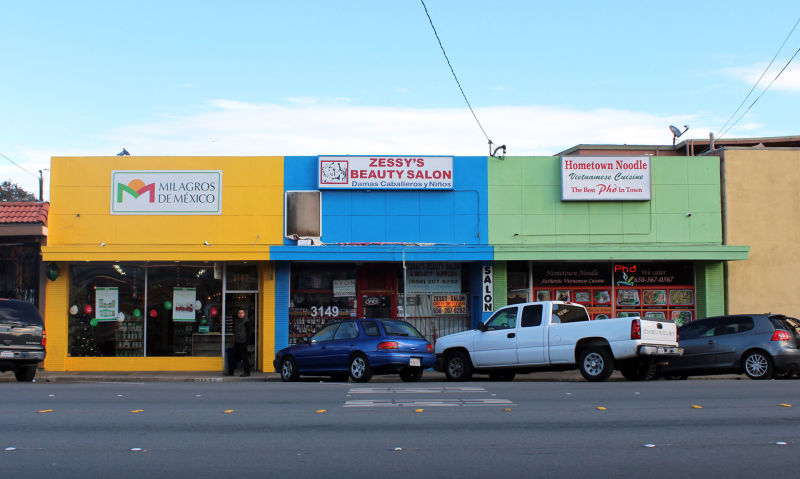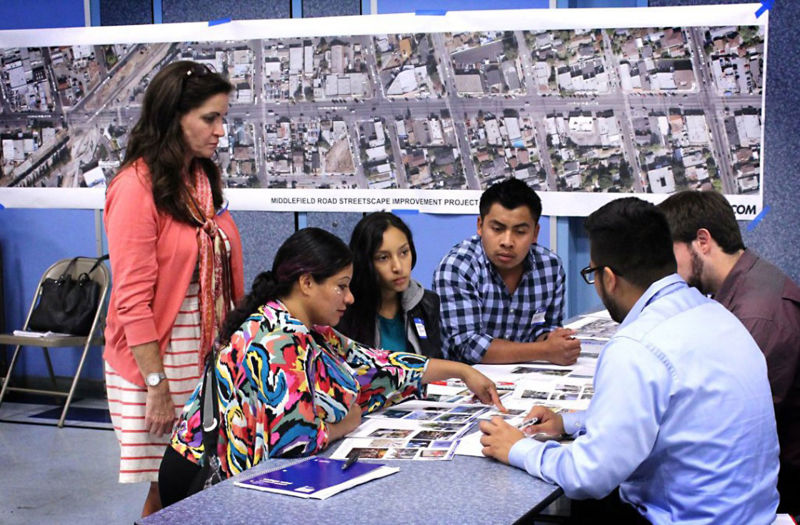A plan to redesign the stretch of Middlefield Road that runs through the working-class neighborhood of North Fair Oaks, just south of Redwood City, has residents torn between wanting a safer, more inviting main thoroughfare, and being concerned that upgrades will lead to gentrification.
Today, cars speed along Middlefield’s four traffic lanes, while pedestrians crowd on narrow sidewalks and cyclists risk being struck by cars backing out of diagonal parking spaces. Last October, the County of San Mateo approved a $12.5 million revamp of Middlefield between Pacific and Fifth Avenues, making the street the centerpiece of its renewed focus on this unincorporated area. The plan will cut the road to three traffic lanes, switch from diagonal to parallel parking, and use the extra space for bike lanes, wider sidewalks and public art.
Yet as housing costs skyrocket in surrounding cities, community support for the project has become mixed with fear. Residents and business owners worry that a spruced-up Middlefield may attract affluent newcomers and push up prices in one of the last affordable pockets in Silicon Valley.

“I’d be really sorry to see the community driven out, and our nice little working street that’s always been really useful turn into some kind of chichi, boutiquey area,” said Penny Durham, a 36-year resident of North Fair Oaks. “There’s been historically sort of benign neglect. Now there’s so much pressure.”
Similar projects to swap traffic lanes for bike paths and broad sidewalks are increasingly common around the Bay Area. Often known as “complete streets” or “road diets,” these redesigns can reduce traffic injuries, encourage healthier and more sustainable commutes, and spark activity on street corners and in local shops. Yet on the Peninsula, these projects have typically been in wealthy neighborhoods and downtown business districts, such as California Avenue in Palo Alto or Lincoln Avenue in San Jose’s Willow Glen.
